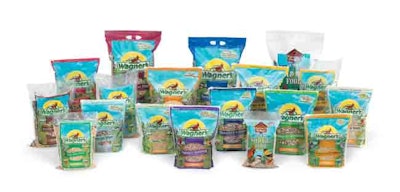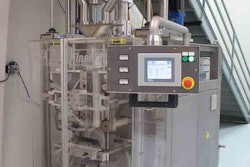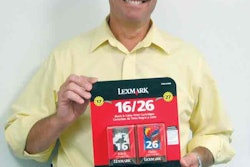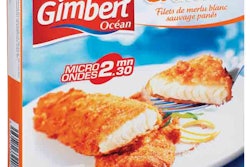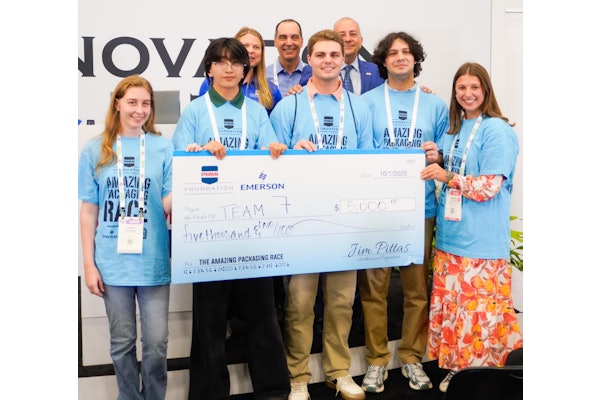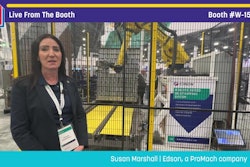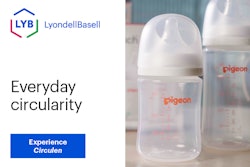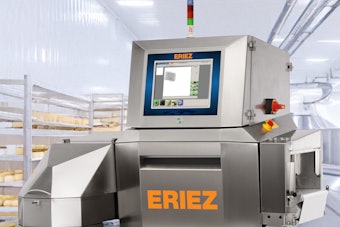In early 2006, Wagner's, LLC of Purchase, NY, began migrating from bags made of monolayer polyethylene to bags made of multilayer structures for its expansive array of bagged wild bird food. Wagner's repackaging—through updated graphics and improved functionality—was done with consumers in mind.
“The redesign goal was to offer a better solution and promote category growth,” says brand associate Jeffrey Stolper. “We looked to overhaul packaging through improvements, to reposition Wagner's as a brand, and to create more of a family look in our packaging.” Three distinct product lines, comprising 50 stock-keeping units, were involved. Sizes range from 2-lb bags of sunflower seeds to 20-lb bags.
The changes were both cosmetic, through graphics, and functional, through structural changes and improved features.
The preformed bags are provided through Bemis Polyethylene Packaging Division (PPD) (www.bemis.com), which has a longstanding history with Wagner's. The new bags include Wagner's stand-up pouches for premium and deluxe items and laydown pillow bags for the classic and deluxe line of products. All of the Bemis packaging for Wagner's is an adhesive lamination of 48-ga PET and PE. The inner PE layer is from 1.5 to 2.5 mils. The inner PE layer is printed in up to eight colors flexo, up from a maximum of six before.
Stolper says that the move to lamination provides more impactful graphics because the printed surface is always protected by a clear PE. The laminated structures also give the stand-up formats more rigidity and better shelf presence. The barrier packaging will reduce shrink at store level and allow Wagner's to provide better service to its customers.
Another key improvement is the use of a slider reclosure on the premium products to replace the zippered reseal used before (see sidebar, Slider reclosure flies with consumers). Most larger sizes have die-cut handles along the top flap for ease of carrying.
Consolidation and tiering
Wagner's also consolidated its products, reducing 70 products to about 50. “We looked at our product assortment and made sure every item had a purpose and a role within the category,” says Stolper.
Wagner's has a good, better, and best go-to-market strategy, so the products are divided into three tiers: classic, deluxe, and premium. Wagner's did not have three clearly defined tiers before. “We wanted to simplify the purchase decision for consumers,” says Stolper. “The category is confusing to customers. We want to make it easier for them to shop and purchase food for wild birds.” The deluxe blends serve as a “bridge” for consumers to get into the higher-quality premium blends, he adds.
“We wanted the bags to be differentiated on the shelf, but we also want consumers to see that the products are from the same family with different border colors and different product names,” says Stolper.
Stolper says that the new design was done to focus more on Wagner's as a brand, thus the Wagner's name was made more prominent. The design also appeals emotionally to its customers. “We want them to know what product attracts each species and to develop an emotional attachment for feeding wild birds,” Stolper explains.
The packs also feature a repositioned unprinted view window that was moved from the side of the packs to front and center. Stolper says consumers know what ingredients are high-quality and which blends attract certain species of wild birds.
Visual appeal
Bags include a picture illustration and name of each bird; graphics were also changed from photos of birds to illustrations, which provides more flexibility and also better represents the birds, Stolper says. “Overall, the new packs provide a better look that is more attractive and appeals better to our consumers,” says Stolper. He feels that most consumers can visualize a bird before they know what it is.
Also new is a detailed graphic feeding preference chart on the back of many of the bags (above). “One of the goals was to simplify and make the graphics neat, informative, and easy to read,” says Stolper. “It creates a competitive advantage for Wagner's.”
Graphics ideas from Beacon Branding (www.beaconbranding.com) met Wagner's objectives.
The products are packaged at four manufacturing facilities in four states. Wagner's uses current equipment to fill and seal premade bags as before, says Stolper. “This change in packaging materials was essentially transparent to our operations.”
Wagner's wild bird food is sold through all retail channels from home-improvement stores, grocery stores, to hardware stores. These include outlets such as Home Depot, Safeway, Albertsons, Food Lion, Costco, HEB, A&P and other premier retailers.
“Our new designs are intended to deliver category growth,” says Karl Eisleben, senior VP of sales and marketing. They seem to have done just that.
Consumers flock to new format
Introduced nationally, the products have created a buzz within the trade as well as with consumers. In addition to 13 new product introductions, Wagner's reports a 30% sales increase on same items, which demonstrates the strength of the packaging changes. Wagner's piles innovation onto innovation: New products include blends that target birds in particular regions, a first in the industry, according to Stolper.
This latest innovation flurry continues a tradition at Wagner's. The company introduced reclosable packages into the market in 1968, and was also the first to market with standup bags, in 1998.
The project continues a relationship that Wagner's has had with Bemis for more than 40 years. “They know our needs,” says Stolper. “They also have experience and packaging that's second to none. They are always at the forefront of technology exemplified by the slider reclosure and their own production capabilities.”
The rollout was 90% completed as of early September, according to Stolper. Yet even as the rollout nears completion, Wagner's is already looking at new opportunities.
Stolper calls the rollout time frame aggressive, yet one that Bemis met. “We applaud the effort of many people and departments within Bemis in accommodating and working with us to meet that deadline. We are very happy with the outcome.”
